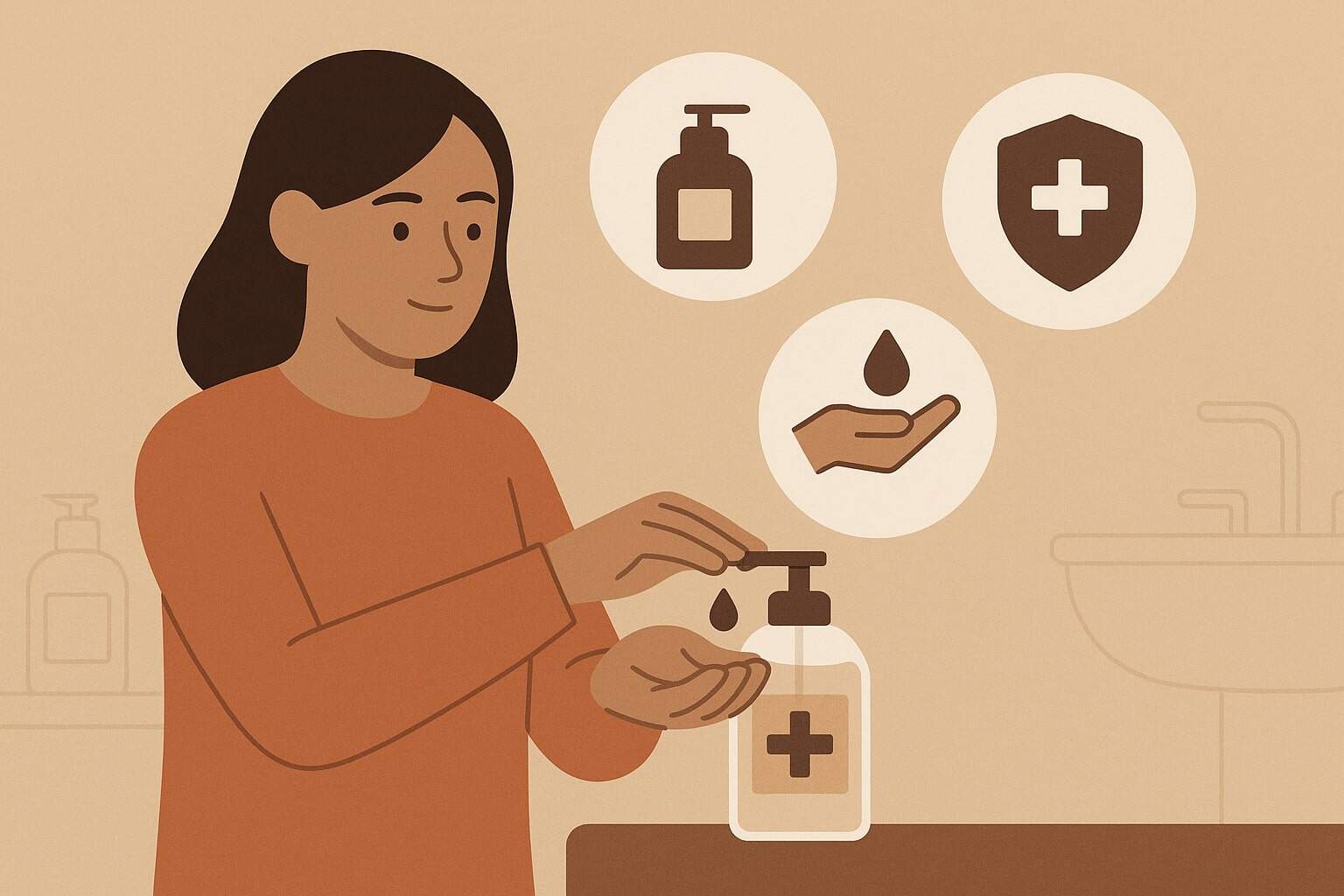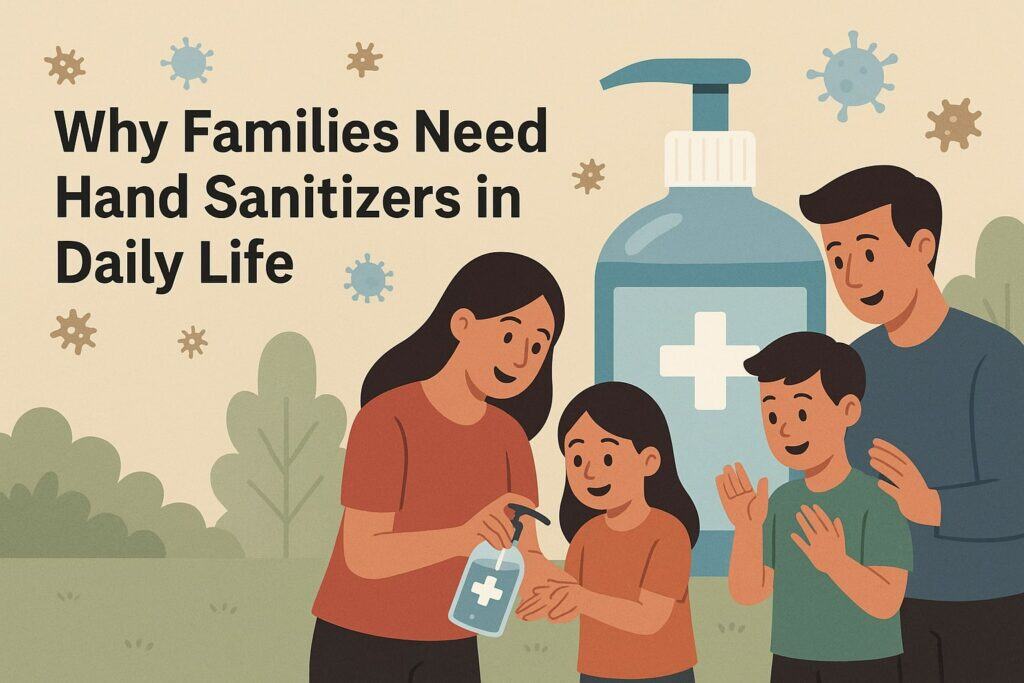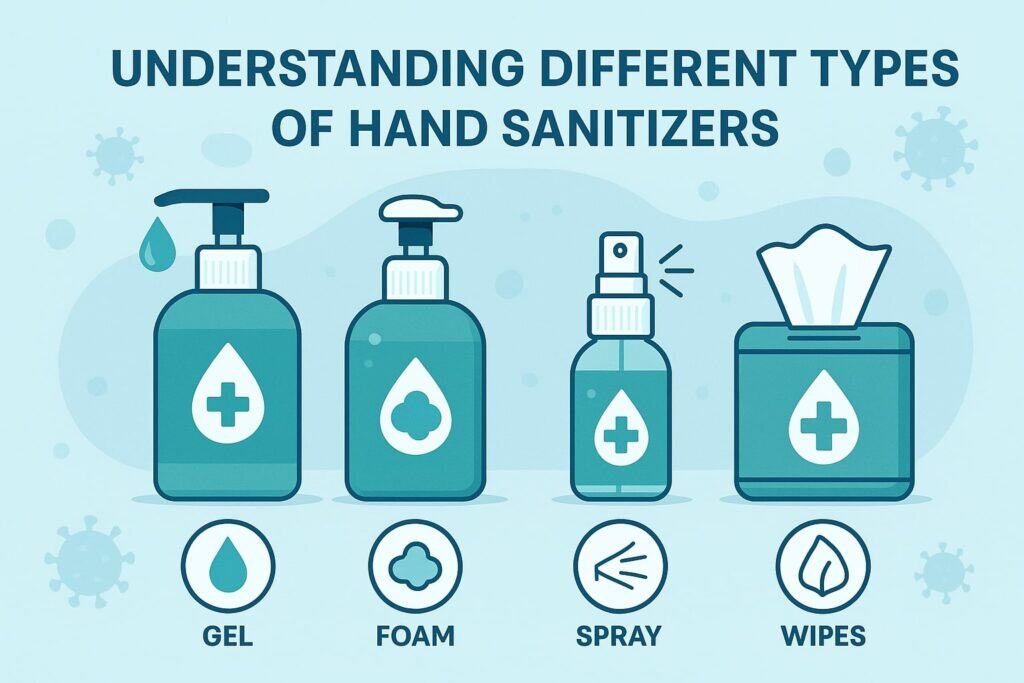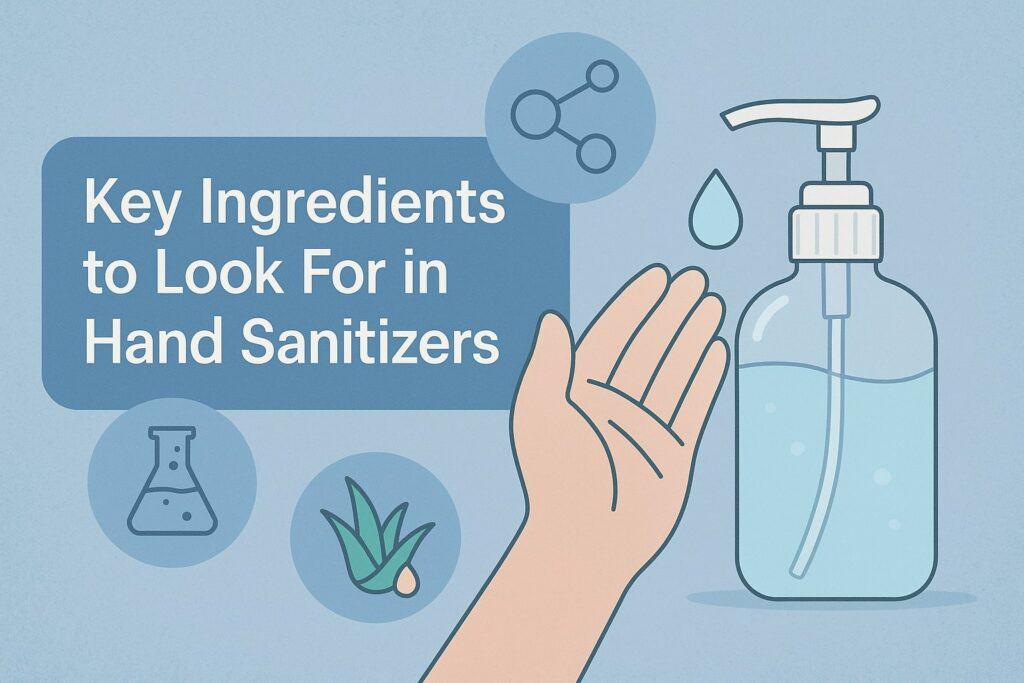
By myhandsanitizershop September 30, 2025
In today’s world, protecting our families from germs, viruses, and bacteria has become a top priority. Hand sanitizer has emerged as a daily essential for both households and individuals, especially when soap and water are not easily available.
Whether you’re shopping for a school-going child, a busy parent, or elderly grandparents, choosing the right sanitizer can feel overwhelming. With so many options in the market—gels, sprays, foams, alcohol-based, alcohol-free, scented, or fragrance-free—families often struggle to know which one is safe, effective, and best for their needs.
This comprehensive guide will walk you through everything you need to know about buying hand sanitizers for your family. From understanding different formulations to safety considerations, cost-effectiveness, and practical usage tips, you’ll learn how to make the best decision for your loved ones.
Let’s dive deep into what makes a great sanitizer, why families should choose carefully, and how to use sanitizers responsibly.
Why Families Need Hand Sanitizers in Daily Life

Families are constantly on the move—between schools, offices, playgrounds, grocery stores, and public transportation. Each of these environments exposes us to countless germs and potential health risks. Hand sanitizers serve as a portable shield, offering instant disinfection when soap and water aren’t accessible.
For parents with young children, this becomes particularly crucial. Kids touch surfaces more often, put their hands in their mouths, and interact closely with peers. A bottle of hand sanitizer in your bag, car, or pocket ensures quick protection during outings.
Similarly, for working adults or elderly family members with weaker immune systems, the use of sanitizers can significantly reduce the risk of catching illnesses.
Another reason families rely on sanitizers is convenience. Washing hands with soap requires water, sink access, and proper drying. Sanitizers, on the other hand, can be used instantly in places like cars, parks, or even at the dinner table before a meal outdoors.
However, not all sanitizers are created equal. Some are more effective at killing germs, while others prioritize skin-friendliness or fragrance.
Families must balance effectiveness with safety, especially when children are involved. Parents also need to teach their kids how to use sanitizers properly—applying the right amount, rubbing until dry, and avoiding touching the eyes or mouth afterward.
Lastly, consider psychological reassurance. During flu seasons, pandemics, or general outbreaks, simply carrying sanitizer provides peace of mind. Families feel more confident participating in social activities knowing they have an added layer of defense against infections.
Understanding Different Types of Hand Sanitizers

When browsing store shelves or online marketplaces, you’ll come across multiple types of hand sanitizers. Each has distinct properties, making it important for families to understand what they’re buying. Broadly, sanitizers fall into two categories: alcohol-based and alcohol-free.
Alcohol-based sanitizers typically contain 60–95% ethanol or isopropyl alcohol. These are highly effective at killing most bacteria and viruses, including those responsible for colds, flu, and COVID-19.
The Centers for Disease Control and Prevention (CDC) specifically recommends alcohol-based sanitizers with at least 60% alcohol concentration for reliable disinfection. They come in gel, foam, or spray formats. While powerful, alcohol can dry out the skin, so families may want to look for added moisturizers like aloe vera or glycerin.
Alcohol-free sanitizers often use disinfecting agents like benzalkonium chloride (BZK). These are gentler on the skin and may be less irritating for children or those with eczema.
However, their effectiveness against certain viruses may not be as strong as alcohol-based products. They’re still useful in everyday low-risk situations, but families should be cautious if using them as their sole line of defense.
In addition, sanitizers come in different delivery formats:
- Gel sanitizers: Thick and easy to control, great for children as they don’t drip.
- Foam sanitizers: Lightweight, quick-drying, and often less sticky than gels.
- Spray sanitizers: Convenient for covering surfaces like shopping cart handles or toys, in addition to hands.
- Wipes: Dual-purpose—clean dirt and disinfect at the same time.
Each format has pros and cons. For instance, wipes may dry out if not sealed properly, while sprays may evaporate quickly. Families should consider convenience, safety, and usage scenarios when choosing.
Key Ingredients to Look For in Hand Sanitizers

Understanding sanitizer ingredients is crucial to ensure you’re buying a safe and effective product. The active ingredient is usually alcohol (ethanol or isopropyl) or BZK.
For alcohol-based sanitizers, 60–70% concentration is ideal for everyday use, while higher concentrations may be too harsh for children’s skin.
Other key ingredients include:
- Moisturizers (aloe vera, glycerin, vitamin E): Prevent dryness and keep hands soft with repeated use.
- Essential oils (lavender, tea tree, peppermint): Provide natural fragrance but may cause allergies in sensitive skin.
- Fragrances: While pleasant, synthetic fragrances can irritate children or those with sensitive skin. Opt for fragrance-free when in doubt.
- Thickeners (carbomers): Give gel sanitizers their consistency.
- Water: Balances concentration and texture.
Families should avoid products containing methanol (wood alcohol), which is toxic and unsafe. The FDA has issued multiple recalls of sanitizers containing methanol, as ingestion or absorption can be harmful, particularly for children. Always check labels carefully.
Safety Considerations for Families with Children
One of the biggest concerns families face with hand sanitizers is child safety. While sanitizers are effective, misuse can pose risks. Children might accidentally ingest sanitizer, mistaking it for a drink, or use excessive amounts leading to skin irritation.
Parents should follow these safety tips:
- Always supervise young children when applying sanitizer.
- Use only a pea-sized amount and rub until completely dry.
- Store sanitizers out of reach of toddlers, just as you would with medicines or cleaning supplies.
- Choose child-friendly packaging—some brands offer foam dispensers that release controlled amounts.
- Avoid heavily scented sanitizers that might tempt kids to taste them.
In case of accidental ingestion, families should seek medical attention immediately. Alcohol poisoning is a serious risk, even from small amounts. For this reason, some parents prefer alcohol-free sanitizers for younger kids, though they should weigh the reduced effectiveness carefully.
Additionally, families should be aware of skin sensitivities. Frequent sanitizer use may cause dryness or mild rashes. Choosing products with aloe vera or other natural moisturizers can help. Using hand cream after sanitizing is another way to maintain skin health.
Choosing Between Household-Sized and Portable Sanitizers
Families often need sanitizers in multiple formats. Large pump bottles are perfect for home entryways, kitchens, or bathrooms, ensuring everyone sanitizes when coming inside. Smaller travel-sized bottles fit easily into backpacks, purses, or cars.
For households with multiple children, buying larger refill containers is more economical. You can refill smaller bottles instead of purchasing new ones each time. Some families also prefer attaching sanitizer keychains to kids’ school bags for quick access during school hours.
The choice between household-sized and portable sanitizers depends on lifestyle. Active families constantly on the go will benefit from having portable options in cars, diaper bags, or sports kits. Meanwhile, stay-at-home parents or caregivers may prioritize bulk bottles to cover frequent use indoors.
Eco-conscious families may also want to consider refill stations or sanitizers packaged in recyclable materials. Sustainable choices not only save money but also reduce environmental impact.
Cost vs. Value: Making Budget-Friendly Choices
Hand sanitizers vary widely in price depending on brand, size, ingredients, and packaging. While cheaper options may be tempting, families should prioritize safety and effectiveness over cost alone. That being said, there are ways to make sanitizer use affordable without compromising quality.
- Buy in bulk: Larger containers often provide better value.
- Look for store brands: Generic sanitizers can be as effective as premium ones if they meet CDC guidelines.
- Refill instead of rebuy: Refillable bottles save both money and plastic waste.
- Balance features with needs: If fragrance-free works best for your family, don’t pay extra for scented versions.
Ultimately, the best value comes from a sanitizer that combines safety, skin-friendliness, and cost-effectiveness. Parents should compare ingredient lists, certifications, and customer reviews rather than relying solely on brand reputation.
FAQs About Hand Sanitizers for Families
Q1. Are alcohol-free sanitizers safe and effective for children?
Answer: Alcohol-free sanitizers can be safer in terms of reduced risk of accidental poisoning or skin irritation. They use alternative ingredients like benzalkonium chloride, which is generally considered safe for external use.
For families with toddlers who might lick their hands, alcohol-free versions may feel like a safer choice. However, they may not be as effective against certain viruses, including COVID-19. Parents must weigh this trade-off: higher safety vs. slightly lower germ-killing power.
In many cases, it’s best to use alcohol-free for low-risk daily activities while keeping an alcohol-based option for high-risk environments such as public transport or crowded gatherings.
Q2. How can I teach my kids to use hand sanitizer properly?
Answer: Teaching children to use sanitizer is about making the process simple, safe, and fun. Start by demonstrating—apply a small amount to your palms, rub thoroughly until dry, and avoid touching your face.
Encourage them to sing a short song while rubbing, just like with handwashing. Also, explain why sanitizer is important in age-appropriate language, linking it to keeping themselves and others healthy.
Supervision is key until kids understand how much to use. Over time, with consistent reminders and positive reinforcement, children will develop responsible hygiene habits that become second nature.
Q3. Can frequent use of hand sanitizer damage skin?
Answer: Yes, frequent use can cause dryness, redness, or even mild cracking in sensitive skin due to alcohol content. This doesn’t mean families should avoid sanitizers—rather, they should choose products with added moisturizers and encourage applying lotion afterward.
For children or elderly family members with already delicate skin, fragrance-free and aloe-based sanitizers can help reduce irritation. Alternating between washing with mild soap and sanitizer use is another good practice.
Conclusion
Hand sanitizers are more than just a pandemic-driven necessity—they are an essential part of family hygiene and safety. Choosing the right one involves balancing effectiveness, safety, convenience, and cost.
Families should prioritize alcohol-based sanitizers for strong protection while also considering alcohol-free alternatives in certain child-specific scenarios. Looking closely at ingredients, packaging, and certifications ensures you avoid harmful or ineffective products.
Ultimately, a family’s best approach is to keep a mix of sanitizer types and sizes—large bottles at home, portable ones for outings, and skin-friendly versions for children. With proper use and supervision, hand sanitizers provide an invaluable shield against illness, allowing families to live healthier, more confident lives.